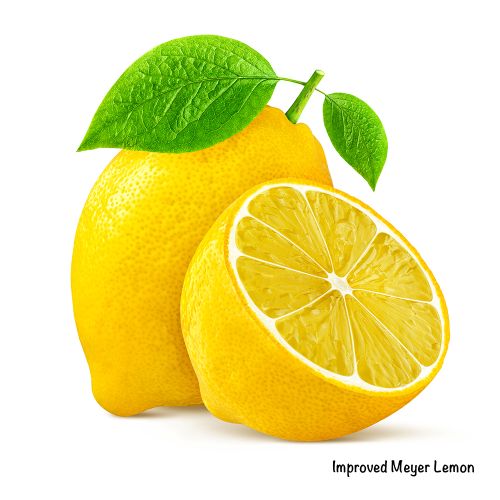Categories
Other Pages
- Age on other Planets
- Aliens
- American Flag
- Annuals
- Avoiding Scams
- Awareness Ribbons
- Baileys Liqueur
- Bananas
- Banana Tree, Grand Nain
- Banana Tree, Ice Cream
- Banana Tree, Zebrina Rojo
- Beekeeping
- Bleach
- Boogaloo
- Bookmarks
- Bullying
- Cats
- Chillicothe Businesses
- Christmas Tree
- Ciroc Vodka
- Coffee Pods
- Color Codes Chart
- Consumer Resources
- Consumer Resources - Elders
- Credit Score Checkers
- Credit Scores
- Death Checklist
- Disaronno Amaretto
- Donation
- Drug Test
- Eye Teasers
- Fonts
- Foods To Regrow
- Friend
- Funny Things
- Fun Stuff
- Giving
- Growing Blueberries
- Halloween
- Halloween Treats
- Hello!!
- Home Bar
- House Plants
- Hunger Facts
- Interesting Facts
- Kinds of Tea
- Lucky Bamboo
- Macaroni!!
- Missouri
- Missouri Prisons
- National Foundations
- Never Forget
- New Page Soon
- One Little Rose
- Orchid Growing
- Orchid Sources
- PayPal.Me
- Perennials
- Phobias A-Z
- Plant Care
- Plant Zone Map
- Propagating Plants
- Ragtime Music
- Recipes I like
- Roses
- Sadie & Beethoven
- Scam Calls
- Smile
- Speed Test
- Spices You Need
- Spices I Have
- State Trees
- Superstitions
- Symbols
- Tequila Rose
- The Ten Commandments
- Top Alcohol
- Top Animated Movies
- Top Comedy Movies
- Top Expensive Movies
- Toyota Yaris 2008
- Toyota Yaris 2012
- Tree, Calamondin Orange
- Tree, Meyer Lemon
- Tree, Persian Lime
- US Bill of Rights
- US Constitution
- US Declaration of Independence
- UV Vodka
- Weight on other Planets
- Wine Clubs
- Wines
- Wines - Missouri
Needed to read PDF's
Meyer Lemon
(Improved)
"Citrus × meyeri 'Improved'

How To Grow and Care For Meyer Lemon Tree
The Meyer
Lemon Tree, is believed to be the result of a cross between an orange
and a lemon tree. These sun-loving citrus trees are robed with
attractive green foliage, fragrant flowers and is self-pollinating.
Meyer
lemons produce delicious tangy citrus fruits as long as it receives
enough sunlight and proper care.
The Meyer Lemon Tree, is believed to be the result of a cross between an orange and a lemon tree. These sun-loving citrus trees are robed with attractive green foliage, fragrant flowers and is self-pollinating.
Meyer lemons produce delicious tangy citrus fruits as long as it receives enough sunlight and proper care.
Where Did The Meyer Lemon Tree Come From?
The original Meyer lemon tree came to the United States from China in 1908.
After the introduction, the dwarf-sized plant became very popular. However, due to being highly susceptible to disease, the Dwarf Meyer lemon tree was banned.
In 1975, the University of California introduced the “Improved Meyer Lemon Tree.” A cold hardy plant, which bears thin-skinned fruits and grows well in the right conditions.
Meyer lemon trees grafted on to a rootstock will produce fruit in about two years. Seed grown Lemon tree plants can take 4-7 years to start bearing fruit.
These fruit trees can grow as an indoor cold tolerant plant in colder zones but grows well outdoors year-round in USDA Hardiness Zones 8-11.
When comparing the fruits of Meyer lemons to other citrus fruits varieties such as lime, mandarin orange, and regular lemons, you will see very distinct qualities.
In appearance, fruits of the Meyer lemon tree look smaller and rounder. The fruits’ color ranges from deep yellow to orange with dark yellow citrus pulps.
Fruits of the Meyer lemon trees contain moderate levels of acidity. It does not give a strong tang, unlike the regular lemons.
Moreover, they have a sweeter taste which makes a lot of people prefer adding this sweet lemon to different dishes.
Some of the Meyer lemons recipes include Meyer lemon curd, lemon meringue pie, and candies. It also serves as a great addition to salads and dressings.
Meyer lemon’s spice and sweetness can make a recipe more palatable.
Nutrition Facts
For 1 fruit (2-3/8" dia) of meyer lemon (84g)
| Nutrient | Value | %DV |
| Calories | 25 | 0% |
| Fats | 0g | 0% |
| Saturated fats | 0g | 0% |
| Trans fats | 0g | 0% |
| Cholesterol | 0mg | 0% |
| Sodium | 0mg | 0% |
| Carbs | 8g | 3% |
| Net carbs | 6g | 0% |
| Fiber | 2g | 7% |
| Sugar | 2g | 0% |
| Protein | 0.5g | 0% |
| Vitamins & Minerals | ||
| Calcium | 20mg | 2% |
| Iron | 0.5mg | 6% |
| Potassium | 120mg | 3% |
| Vitamin D | 0μg | 0% |
| Sugars | ||
| Sugar | 2g | 0% |
Meyer Lemon Quick Care Tips
- Botanical Tips: Botanical Name: Citrus x meyeri
- Common Name(s): Meyer Lemon
- Synonyms: Citrus limon x reticulata
- Family & Origin: Rutaceae, China
- Growability: Easy
- Grow Zone: 8-11
- Size: 7-10′ feet tall and wide
- Flowering: Fragrant white flowers in spring and summer
- Light: Full sun
- Humidity: Moderate
- Temperature: Prefers 50° to 80° degrees Fahrenheit and no lower than 32°F
- Soil: Well-draining, slightly acidic soil
- Water: Keep soil consistently moist, but not waterlogged
- Fertilizer: Use a citrus-specific fertilizer every 4-6 weeks during growing season
- Pests & Diseases: Common pests include spider mites and scale insects, can be susceptible to root rot and citrus canker disease
- Propagation: Grafting or rooting cuttings
- Plant Uses: Edible fruit, ornamental plant for landscaping or container gardening.
If you will substitute citrus lemon for the Meyer lemon juice, it is recommended that you start with smaller amounts and test. Gradually add more citrus drops according to taste.
The Meyer Lemon Tree is one of the simplest fruit trees for homeowners to care for and grow. Follow these tips carefully for a successful tree.
Restrictions *Due to state restrictions they cannot be shipped to the following:
Arizona, Florida, Texas, Canada, Guam, Hawaii, Puerto Rico, Virgin Islands, Alaska, Alabama
Meyer Lemon Tree Care & Growing Tips
The first step in successfully growing any plant is knowing what they like. Let’s run down what Meyer Lemon Trees like:
- Correct Watering – Water soil thoroughly. These citrus trees need properly watered ground. Soil should not stay soaked or soggy
- Rich and good drainage when growing in a large container with drain holes.
- Full sun (direct sunlight 6 hours per day) and protection from the wind
- Temperatures between 50° to 80° degrees Fahrenheit and no lower than 32° degrees Fahrenheit.
- Regular feeding with an all-purpose slow-release fertilizer, a high nitrogen fertilizer, a specialty citrus fertilizer or even a lemon tree fertilizer. Do not feed meyer citrus trees during winter.
What Meyer Lemons Don’t Like
- Avoid keeping their feet wet and overwatering.
- Temperatures below freezing. Move the tree indoors during the winter, especially if temperatures fall to freezing
- Too little or too much fertilizer
- Not enough sunlight
Finding The Right Soil and Container For Your Meyer Lemon Tree
Although the meyers citrus does well in almost all potting soil types, the tree does well in loamy soil.
Ideally, use a three-gallon pot for a non-mature plant and a seven-gallon pot or larger pots for a mature plant. The tree grows to a full height of 7-10 feet.
Provide Trees With Plenty Of Sunlight
Citrus trees do well in warm locations and a sunny spot. Make sure the Meyer lemon plant will receive plenty of sunlight daily.
If you live in an area with freezing winters, bring the citrus trees inside to avoid damage. Take them outdoors in the spring.
When indoors, place the tree in a south-facing window for it to receive sufficient direct sunlight. Ensure that the tree receives at least six hours of sunlight every day.
Meyer Lemon Fertilizer and Feeding
The Meyer lemon tree needs regular feeding to improve blossom growth as well as fruit production, as soon as the tree starts producing new growth in spring.
Reduce the frequency of feeding once the tree finishes producing fruit. During the first year of planting, provide the tree with 0.4 pounds of a balanced 6-6-6 fertilizer or a specialty citrus fertilizer. Split the amount into six spaced applications.
In the second year use a pound of the same lemon tree fertilizer divided into five equal proportions.
Use about 1.9 pounds of fertilizer split into four applications during the third year.
Progressively use about 4.4 pounds divided into three application during the fourth year and 6.1 pounds split into three equal application during the fifth year and the years after that.
Lemon Tree Watering
To grow healthy citrus trees proper watering is essential.
The key – DO NOT overwater. For potted Meyer lemon trees, you can check the moisture level by dipping your finger to the second knuckle into the soil. If the soil feels damp, wait another day before watering.
Recheck the moisture level the following day and if the second knuckle comes out dry, water the plant.
Provide the tree with 4-6 cups of water and check the dampness.
If the water is not enough, add two more cups. The frequency of watering will depend on the temperature and season. Keep on rechecking the soil dampness and water only when necessary.
NOTE: Meyer Lemon trees, Key lime, grapefruit and other citrus trees growing in large pots will require more water.
Temperature Requirements
The Meyer Lemon tree will do well with a relatively cool room temperature.
To be specific, the plant does well when maintained in an average of 65° degrees Fahrenheit during the day and 55°-60° degrees Fahrenheit during the night.
However, the tree will do well with much higher temperatures, especially during the summer. The Meyer lemon does not like freezing temperatures.
Aid In Pollination Of The Meyer Lemon Tree Using A Cotton Swab
Although the Meyer’s Lemon self-pollinates, indoors pollination may not occur because of no breeze or insect for pollinating.
Collect pollen (the yellow powder found in the center of a flower) by rubbing a cotton swab against a stamen.
Want a boost? Here’s how to pollinate a lemon tree even though they self-pollinate.
Rub the stigma with the cotton swab covered with the pollen to help pollinate the flowers.
Pruning The Trees
To keep the plant in shape, avoid overcrowding and prune as needed. Look for long, dead branches and branches that grow towards the tree trunk.
Pruning will allow proper airflow around the plant, encourage growth and help reduce potential diseases.
For large size lemons snip off all but one budding fruit to allow the tree to produce fruit larger in size.
Protecting Meyers Lemon From Pests
Some of the pests that affect Meyer lemon includes aphids, spider mites, and leaf borers. This pest can cause the plant stress and other problems making the citrus tree weak, reducing the fruit yields.
Learn Tips on Getting Rid of Aphids on Lemon Trees.
Proactively protect the young tree against these pests starting in spring when peak activities typically start.
Practicing good hygiene such as picking fallen fruits and keeping the garden weed-free.
When you find pests, use horticultural oils spray as well as applications of insecticidal soaps to eradicate the pests safely. Removing affected branches or leaves will help get rid of stem and leaf borers.
Guarding The Fruit Tree Against Diseases
Brown rot and bacterial cankers start appearing in spring. To tackle these problems before they get out of hand, inspect your plants every week and take action if you suspect any signs of a disease.
Use a standard citrus fungicide spray made of fifty percent-concentrated fixed copper available in garden centers and nurseries. This spray works as an effective all-purpose fungicide for most common diseases affecting this fruit tree.
If you live in Florida, California or Arizona you will need to purchase citrus grown in those states due to agricultural restrictions.
FAQ's
Grow Meyer lemon trees in a pot so it can be moved indoors for the winter or if a freeze is predicted.
Question: I saw a Meyer lemon tree for sale, and I am considering getting one for our backyard. Will this plant survive the northern winters in our area?
Answer: No. It will have to be protected indoors during hard freezes, but I think Meyer lemons are worth the effort. Grow it in a container so you can move it inside when needed.
Question: I have a productive 8-year-old Meyer lemon that’s been planted in the ground for about two years. When and how can I transplant this tree to a more suitable location?
Answer: Dig a rootball with a circumference equal to the dripline of the tree. This should preserve a viable portion of the roots. Keep the rootball in tact as you move it to the new planting spot. The new hole should be a well-draining area and dug as deep as the rootball. Preferably, soil in the new area is comparable to that in the old. If you transplant from light, loamy soil into heavy, poorly draining clay, the tree may suffer, possibly die.
Question: My three-year-old dwarf lemon tree has never had fruit. What is the problem?
Answer: Only certain varieties of lemons selected for pot culture will set fruit while young. The dwarf Ponderosa lemon is the one most commonly grown.
Sometimes it requires more than three years to come into bearing stage. During the summer keep the plant outdoors in a lightly shaded place, with the pot plunged to its rim m the ground.
Bring the plant indoors in the early fall and keep at a moderate temperature, as low as 50° degrees Fahrenheit at night. Give it all the sunlight possible during the winter.
And when do Meyer lemon trees bloom?
It should bloom and set fruit in the fall and spring.
Find me on Social Media
 |
Don't forget to bookmark me to see updates.. Copyright © 2000 - 2025 - K. Kerr Most recent revision November 19, 2025 07:05:35 AM
|











